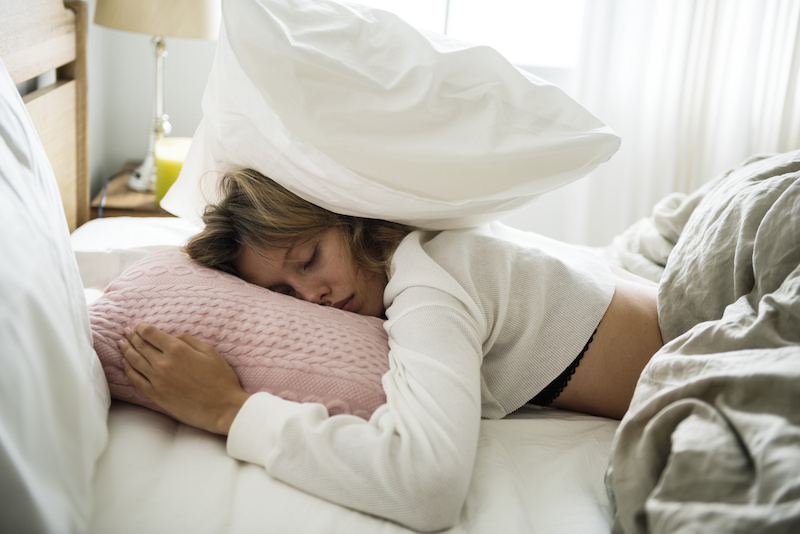
In general, people don’t put a lot of thought into their sleep position when they nod off to sleep. Without really meaning to, you may sometimes find yourself sleeping on your left or right, on your back, or on your stomach.
But does choosing a particular sleep position matter, and is there a “best sleep position”?
To be frank, sleep position isn’t a major concern among young, healthy people.
However, as you get older, you may realize that certain sleep positions are better or worse if you have some medical concerns. So, to find out if your regular sleep position is the most beneficial one for you, here is a guide and you can learn more about it on naturesembracelatex.com.
Back sleeping

Supine or back sleeping is considered a favourable sleep position, although only 10 percent of people sleep on their backs.
Still, even an advantageous sleep position like sleeping on one’s back has its pros and cons.
Pros of back sleeping
Back sleeping can benefit you in the following ways:
- It can help minimize or get rid of neck pain.
- It prevents stress on the shoulders.
- It can help control acid reflux and heartburn, as long as the stomach is in a lower position than the esophagus or upper torso. This can be accomplished easily by keeping a pillow under your head.
- It reduces strain on the rib cage and internal organs.
Cons of back sleeping
If you already have the following conditions, consider maintaining your old sleep position instead of trying to convert to back sleeping.
- Sleep apnea: Sleeping on your back combined with using thick pillows could force your chin forward and lead to breathing obstruction. If you want to sleep on your back, use a very low or thin pillow and keep your chin pointing upward. You can also achieve this position by using a neck pillow instead of a full-sized pillow for your head.
- Lower back pain: Sleeping on your back on an overly soft mattress could lead to the sinking of your hips and the unnatural arching of your lower back, thereby leading to lower back pain.
Women who are 20 weeks pregnant or more and chronic snorers should also avoid the supine sleep position.
How to make back sleeping work for you
To reap the benefits of back sleeping, make sure you do the following:
- Avoid high pillows and opt for low or medium ones to maintain a more natural alignment from your neck to your spine.
- Put a pillow under your knees to reduce stress on your hips.
- Use additional pillows for support if you’re switching to supine from another sleep position.
The key here is to only adopt back sleeping if it’s the most comfortable position for you and you don’t wake up to more aches and pains because of it.
Side sleeping

The key to getting the most out of side sleeping is to sleep in a position where the shoulder and hips get pressure relief and the spine is properly aligned. An organic latex mattress from Nature’s Embrace is particularly good for side sleepers, but like everything side sleeping has its pros and cons.
Pros of side sleeping
When done correctly, side sleeping on the left or right provides the following benefits:
- It can help reduce snoring.
- It can soothe the gut.
- It can minimize joint and lower back pain.
- It can provide relief to chronic pain (e.g., fibromyalgia).
- It helps facilitate glymphatic transport or the removal of brain waste.
Pros and cons of left-side sleeping
While there are known advantages to side sleeping in general, sleeping on the left side provides very specific benefits, such as the following:
- For pregnant women, it can help ensure efficient blood circulation to the placenta.
- It can provide relief to those with sleeping disorders (e.g., obstructive sleep apnea) and acid reflux.
- It can help improve digestion efficiency since the stomach and pancreas are located on the left side of the body.
- It can help people with bradycardia or slow heart rate as sleeping on the left increases the heart rate.
- It can calm an overstimulated vagus nerve and help prevent vagal arrhythmia.
However, sleeping on the left side can also be disadvantageous:
- It can strain the heart, kidneys, spleen, and pancreas.
- It can add pressure to the heart from the lungs.
Pros and cons of right-side sleeping
Right-side sleeping is generally recommended for heart health and provides the following benefits:
- It can improve breathing efficiency.
- It can help ease heart palpitations.
However, right-side sleeping also presents certain disadvantages:
- It can worsen heartburn.
- It doesn’t help people with pulmonary conditions as the heart shifts toward the lungs and reduces lung capacity temporarily.
In general, however, healthy individuals would do well to sleep on their right side, so fewer internal organs are strained.
Stomach sleeping

Belly or stomach sleepers are the rarest breed, as only a few people like to sleep on their stomachs or in a prone position.
Pros and cons of sleeping on one’s stomach
Sleeping on one’s stomach can be a beneficial sleeping position for heavy snorers or those with sleep apnea. Lying in a prone position keeps the air passage clear, similar to sleeping on one’s back with a low pillow.
Although you may find sleeping on your tummy to be the most natural position for you, stomach sleeping is the worst sleeping position of all from a medical point of view as it can lead to the following outcomes:
- It can strain the back and neck: Sleeping on your stomach causes your torso or midsection to sink into the bed, so your spine arches into an unnatural position.
- It can cause nerve pain: Sleeping on your stomach can stress or pinch the area along your spinal column (which houses the spinal cord), thereby leading to nerve pain in other parts of your body.
- It can contribute to premature wrinkling: Since your pillows usually come into contact with your face, small creases can form and turn into wrinkles.
Mattress matters
Whatever your sleep position, it’s essential to find a mattress that supports the spine and helps keep its alignment as natural as possible. So, when buying a mattress, consider the following:

- Back sleepers should ideally opt for a medium-firm all-natural latex mattress that moulds itself to the body and provides optimum support.
- Side sleepers who are on the heavy side should go for firm mattresses designed to provide adequate support even with the extra weight. For all others the best mattress for side sleepers is Medium to Medium-Firm with a soft top layer that can envelop the shoulders and hips while helping to maintain a more natural lumbar alignment.
- Stomach sleepers need a firm mattress with a soft top layer, as it can provide adequate support to the back and head when used with a thin pillow or no pillow at all.
One’s sleep position is usually a matter of choice. But regardless of your preferred sleep position, make sure your mattress provides the right amount of support, so you can reap the benefits of a good night’s sleep.
















